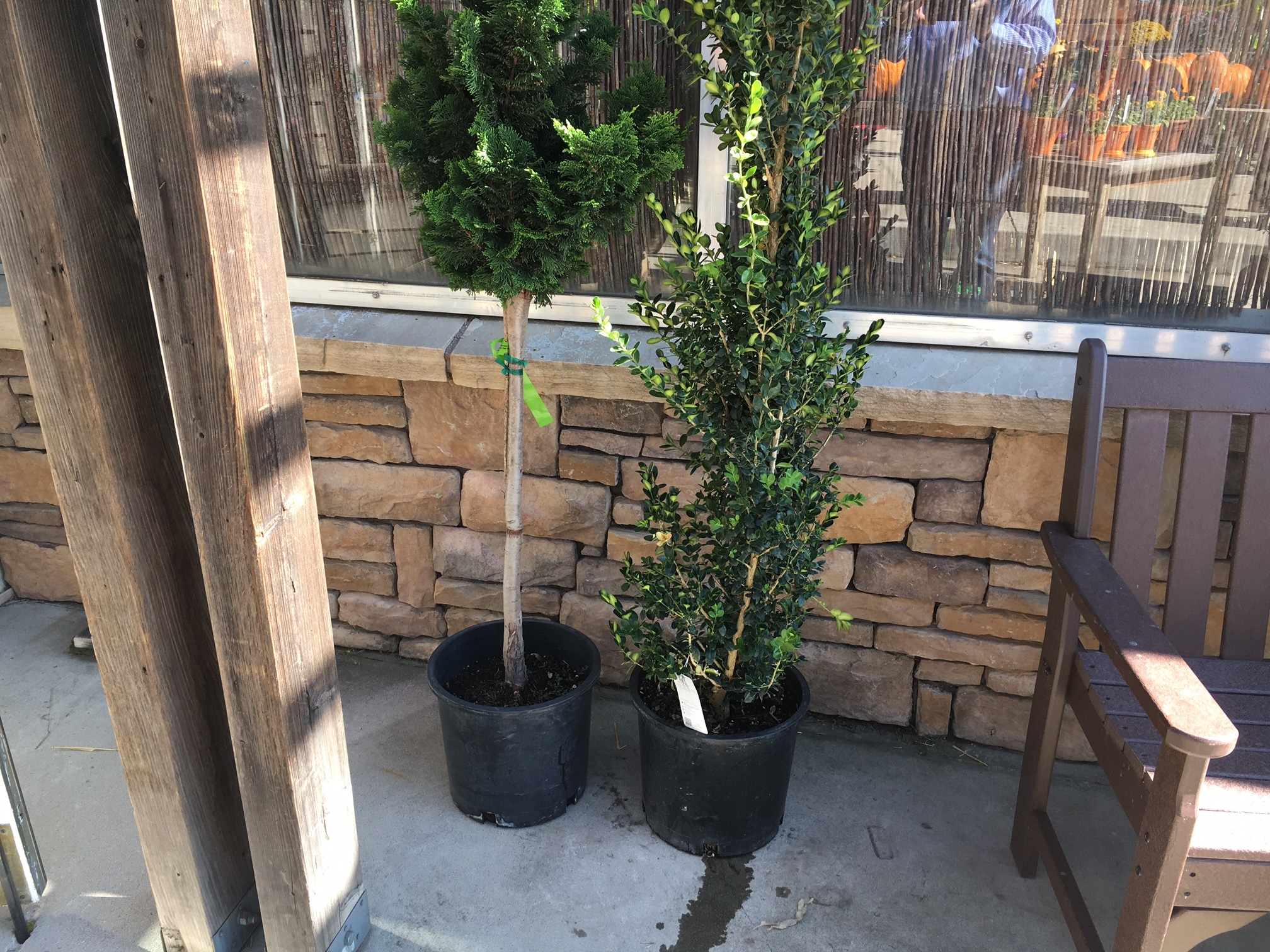Every plant which has been placed in a container, such as trees, shrubs, perennials and annuals are subject to the Colorado winter which includes the damaging freeze/thaw cycle, drying winds, and extreme cold temperatures. The above ground exposure for these type of plantings is more extreme than if they had been planted in the ground. Your containers need extra protection to ensure root and crown survival. Annuals will die back after the first two frosts and do not survive into the next season. Clean up the dead plant debris from around the top of the pot. The pot may be stored with the soil left inside it.
Trees, shrubs and perennials in containers may be left in the container for the winter months with a little extra care. Before the ground freezes this fall, following are a couple of methods to best protect containerized plants.
- Number one, sink the pot into an area in the garden.
- Number two, place the container on the north or east side of the house in a protected location out of the sun and wind.
- The third option is to move the containerized plants to an unheated garage or shed.
The first option will work especially well if the container is small, approximately 8″ – 16″ in diameter. Locate an area in the garden where the soil can easily be dug. Dig a hole and place the containerized plants in the soil. This is also know as “heeling in.” Water the plants well and then cover with 4″ – 8″ of mulch (loose clean straw or hay, dry leaves (not poplar, they mat when wet) or shredded bark). This option simulates the same conditions as if the plants were originally planted in the ground. Check the containers monthly throughout the winter and water if needed to prevent desiccation.
The second option, especially for pots larger than 16″ in diameter is to provide a protected area around the home. Preferably, on a north or east side as this assures more stable temperature during the winter. West and south areas can warm up considerably during moderate winters causing the plants to grow off season. If there are several containerized plants, group them together with smaller plants in the center and the larger on the outside. Water well, then build up a layer of mulch around the outer edge of the group of containers. Add a layer of mulch over the top which helps prevent exposure to the freeze/thaw cycle which will kill the crowns and roots of the plants. Check the containers for moisture every couple of weeks, water if needed, until the hard freeze then check once a month. The plants are to remain dormant, and show no signs of growth until spring.
Finally, if neither option one or two is feasible, move the containerized plants to an unheated garage or shed near a window for some light. No mulching is necessary, but check soil moisture monthly and water sparingly.
In the months leading up to spring, gradually remove the mulch and check the plants condition. Keep the mulch close, as you may want to cover in case a spring freeze is predicted. Wait until after the average last frost (May 10-15) to remove all the mulch. For the containerized plants in the garage or shed, they can be moved outside in the spring after the danger of the last frost. Colorado in the spring time can be just as unpredictable as Colorado in the fall, so watch the temperature for the right time to bring out the plants.

